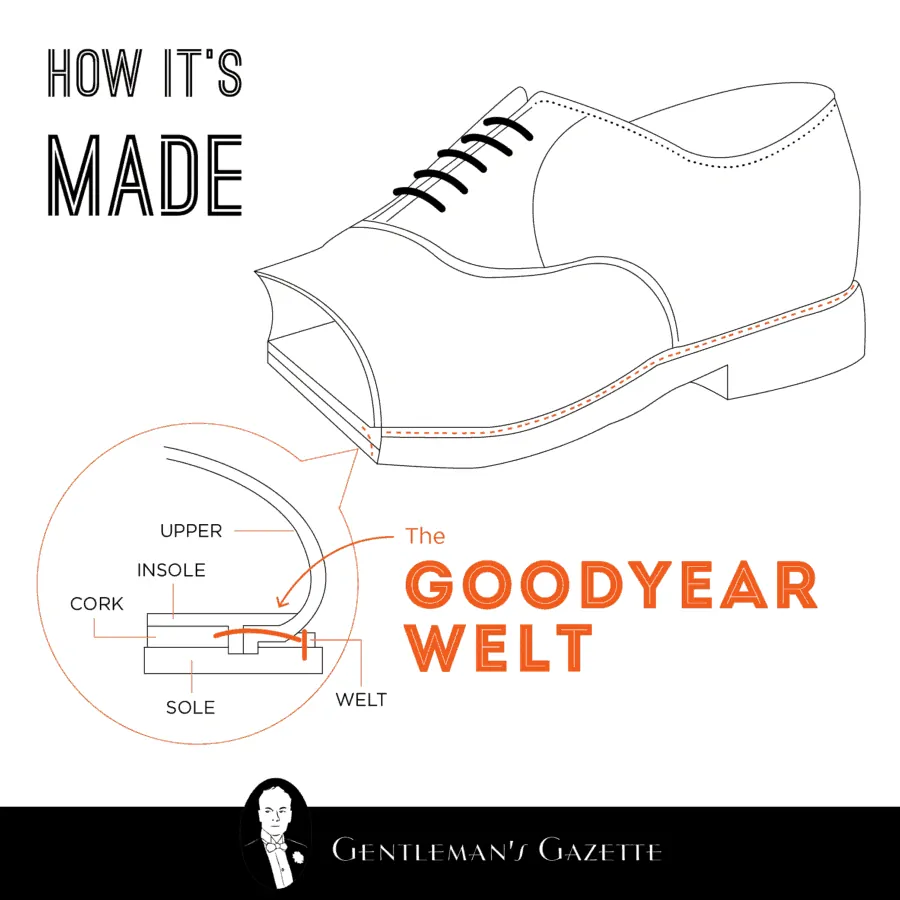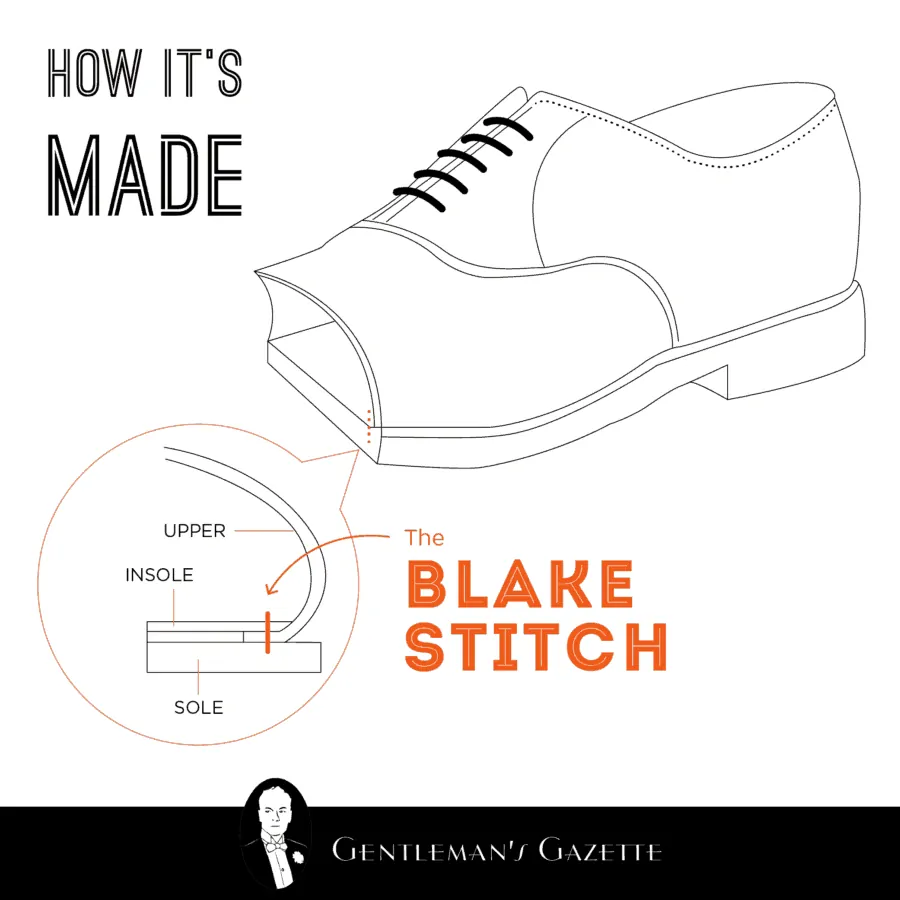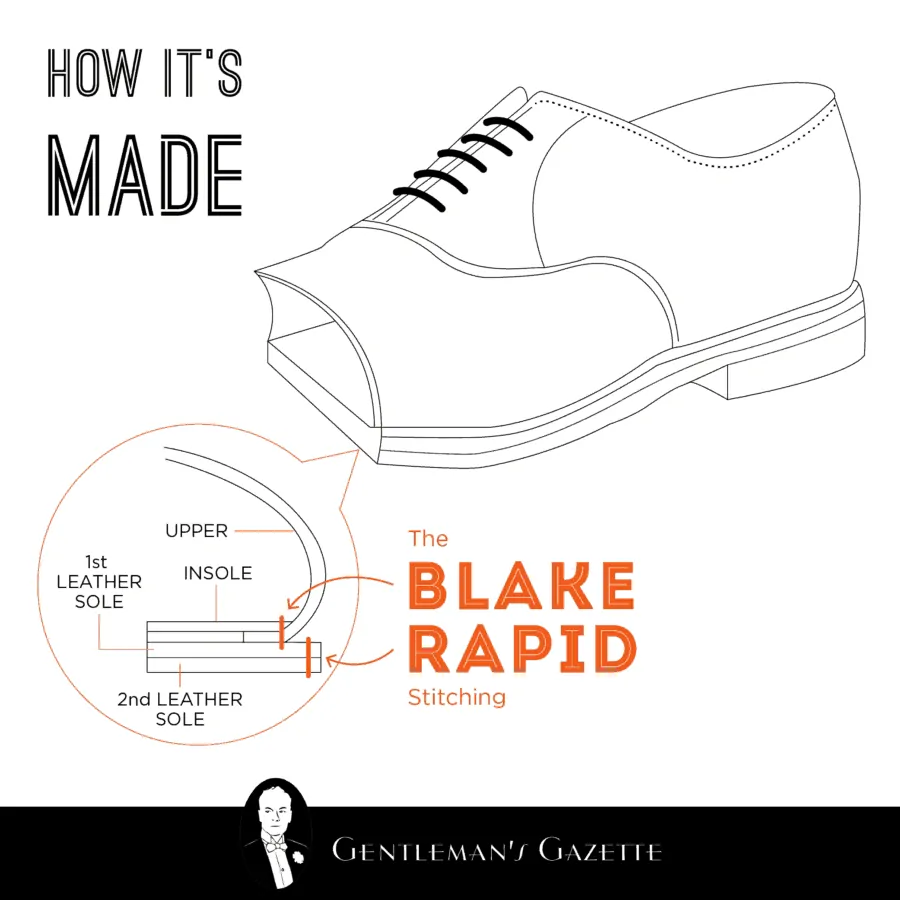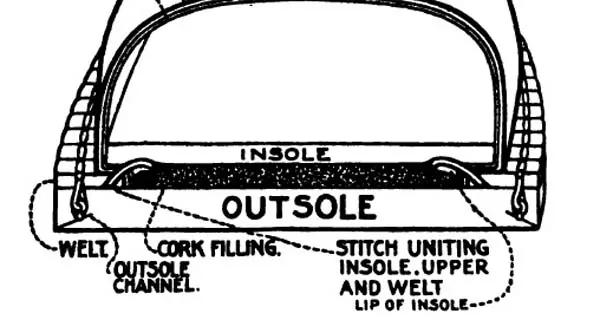Recently, I found an extremely interesting silent movie in color from around the 1930’s that shows very precisely how a Goodyear Welted shoe was made during the era. As you may know, a Goodyear Welt is a specific method of welting the uppers to a shoe. This type of construction has many advantages: a Goodyear Welted shoe is flexible, comfortable, durable and often more breathable than the average shoe. In addition, the welt enables shoes to be repaired over and over again, allowing the wearer to build up the highly desirable patina of a well-worn shoe over years. In my opinion, this video presents an extremely rare opportunity to learn how the individual leather pieces were formed into an item of heritage quality.
In this 22-minute shoe film, you will see many of the 174 processes and 210 operations that went into the making a pair of high quality Goodyear Welted Oxford shoes.
How To Make Shoes – Video
First, the video begins with the leather; only the best hides make for a high quality shoe.
The so-called bend of the hide is used for the outsole. A machine stamps the soles to size and ensures they are of uniform thickness. The innersoles must have the same shape and in order to be able to sew them properly, a canvas band is applied in the gemming process.
Goodyear vs. Blake vs. Blake Rapid

Compared to the Goodyear welt construction, Blake and Blake Rapid are less expensive methods of sewing shoes together that are predominantly used in Italy. Blake simply has a leather sole and no cork which makes the soles thinner, more flexible but also less comfortable to stand on. Moreover, the sole are more prone to get wet. This is counteracted by Blake Rapid stitching which basically adds another leather sole to the Blake Construction.
Overall, goodyear welted is a superior shoe construction method to Blake and Blake Rapid because it keeps your feet dryer and is more comfortable to walk in. On top of that, it can be repaired easily, whereas Blake and Blake Rapid are much more difficult ot repair.


The Leather Upper
The shoe uppers are cut from selected calf hides that are much softer than the soles, but they are likewise pressed to a uniform thickness. In order to keep the waste of leather at a minimum, the uppers are carefully cut by a skilled craftsman. First, the tie, vamp, quarter and tongue are cut and then the brogues are punched into them. The edges of the uppers are shaved in order to prevent a thick layer where they overlap or fold. While bespoke shoemakers do that by hand, but in the video it is done by machine in factory. To reinforce the uppers, a a piece of flannel – called the doubler – is glued to the leather upper from the inside, before the tip is stitched to the vamp. Later, the completed lining is sewn to the completed quarters an
sequently, the eyelets are applied from the inside. Finally, the vamp and the quarters are stitched together, resulting in the finished upper.
The Shoe Is Assembled
The sole is now tacked to the wooden last. Nowadays, these lasts are made of plastic. The uppers are now pulled over the last and tacked to it. Of course, one has to double check that is was pulled on straight. Now, the canvas lip band of the sole is sewn to the uppers, except for the heel area. There, the upper leather is tacked. In the front part, a few temporary tacks are applied to the upper, before the upper edges are trimmed and the Goodyear Welt is sewn to the upper leather through the lip of the sole. Now, the wooden shank is added for stability before the cork filling is put into the space between inner and outsole. The same is done today in order to provide some cushioning for the foot.
Now, the outersole is cemented to the rest of the shoe under high pressure and subsequently, the sole is shaped to fit the rest of the shoe. To ensure that the ouosole stays properly attached, it is sewn on through the welt with two needles. These carry two threads, which come in from the top and the bottom and cross to form a loop in the middle. Here it is done by machine but a bespoke shoe is usually sewn by hand.
Now the soles are molded to the shoe and the leather heel is nailed to it. Now, the sole can receive its final trimming, which requires some skill for it not to look crooked. At this stage, the shoe looks almost complete, however a number of finishing operations remain to be done.
Finishing The Shoe
Hot vibrating irons pound the edge of the sole, giving it a hard, rounded, smooth and polished surface. Subsequently, the soles are polished with wax, and the uppers and the welt are cleaned and polished.
Now it is time to take the last out of the shoe. In the video, it seems so easy, but in fact it requires a lot of strength to accomplish the task.
Interestingly, an employee sprays the shoes with a spray-gun, giving them a uniform shine and luster. I am not sure exactly what is used for the spray, though I think it is preferable to add the finishing polish by hand.
After a final inspection, the shoes are wrapped in a boxed and shipped to the dealer.
Overall, I found this video to be most informative and interesting. Despite it being a silent movie from the 30’s, it provides a detailed step-by-step explanation of how a Goodyear Welted shoe is made.
Conclusion
Overall, this is a fascinating video that shows us how much quality work went into a shoe back then. Today, only better shoes still carry this kind of quality construction, and the producing companies often advertise the inclusion of a Goodyear Welt. Also, we see that there were obviously no worker safety requirements and hence no protection features on the equipment.
For More information about classic men’s shoes such as Oxfords, Derbies or Bluchers, check out our Guides on shoes & boots.
Here you can learn how to properly lace goodyear welted Oxfords and Derbies or Bluchers.

Very interesting! I recently came across silent footage of the Hubbard Shoe factory, where my grandfather was the West Coast rep in the 40s-60s. The company eventually became Rockport before being sold in the 70s. Any insight you have on the film would be most appreciated. Not sure why it was made, perhaps to demonstrate the process to sales staff.
Have look:
http://www.youtube.com/watch?v=ZmL6lR3K-9Q
Thanks for sharing the other shoe video Dan. The video was produced for American shoe stores as The Shoe Story, but I could not tell exactly when it was made. I hope that helps.